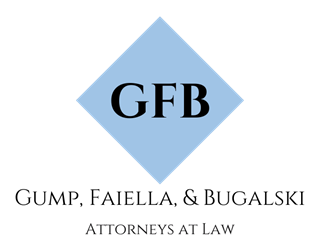CLIENT LOGIN
×Trench & Excavation Injuries
Working in unprotected excavations and trenches is extremely dangerous. The Occupational Safety and Health Administration rates open trench and excavation work as the fourth most deadly occupation in the United States. This work is often associated with water and sanitary sewer lines, as well as other utilities such as power and telecommunications.
Call (800) 264-3455 to tell our team of Columbia personal injury lawyers about what happened to you.
SAFETY STANDARDS & OSHA
OSHA has been keenly aware of the high death rate associated with open trenching since 1973 and of the difficulty of obtaining compliance from contractors and excavators within OSHA regulations. In a special report, OSHA stated “trenching work creates hazards to workers that are extremely dangerous”. Industry standards, OSHA, state law, and local law require preplanning of excavation, including review of soil samples, construction plans, site visits, budgeting for safety, and exploration of utility installation that may be encountered during digging.
ABOUT THE AGCA
The Associated General Contractors of America (AGCA), in their manual of accident prevention and construction, indicates that “a few simple precautions, if observed, can serve to take most of the risk out of trench construction.”
The danger imposed by trenches is well documented and common in the excavation business. The safety standards imposed by law are easily accessible and easy to follow.
Basic safety rules involve three steps:
Identify the site of excavation.
Identify the soil involved.
Choose a mandated safety system for the soil type.
DETERMINING SOIL CONDITION
To determine the soil condition, a site inspection is conducted and boring samples (soil samples) are done and tested. There are three soil types: A, B, and C. The worst soil type for an excavation is Type C, because it imposes the greatest risk to excavation workers. Once the soil type is known, a safety system is chosen from the menu of approved methods. The safety methods can include shielding, as well as benching or sloping, which is the process of changing angles of the walls of the excavation so that the angle of repose is sufficient to insure that gravity will prevent the sides of the trench from caving in.
The standards can also be met by using shielding and sloping, or benching, in combination. To meet the lawful safety standards for type C soil, sloping or benching would have to be done at an angle of one to one to one, up to one and a half, or a combination of a trench shield coupled with sloping or benching. For any excavation deeper than 20 feet, a professional engineer is needed to design these systems. Unfortunately, all too often, trenches are dug that are not sloped or benched correctly, or they do not shield, or trenches are far too narrow to be safe.
FOLLOWING SAFETY MEASURES TO AVOID INJURY
Contractors and excavators have a financial incentive to avoid the safety rules. Narrow trenches mean less material excavated. The material excavated has to be dealt with, and poor soil is usually shipped off of the site and new fill has to be brought in to replace the excavated material. The narrower the trench, the more money that is saved in materials. Furthermore, the faster the project can be completed, the less man hours of labor have to be paid.
Often job foreman are constantly under pressure from management to keep the job moving. We have had workers tell us that if they complained and the site was closed or work hours lost because of safety violations, they would be fired. In an industry operating on lowest bidder pricing, cutting out safety related expenses is not uncommon. Unfortunately, it is the worker who bears the risk of injury and death if a trench collapses.
HOW WE CAN HELP
Our law firm has successfully prosecuted trench collapse cases against contractors, excavators, and co-employees. If you or a loved one has been injured or killed in a collapsing trench or excavation case, contact an experienced Columbia personal injury attorney at the law firm of Gump, Faiella & Bugalski, LLC for a free initial consultation.
Powered by



